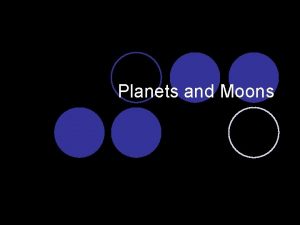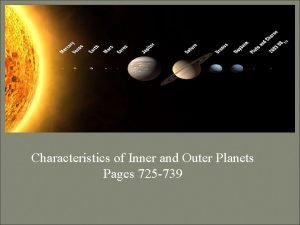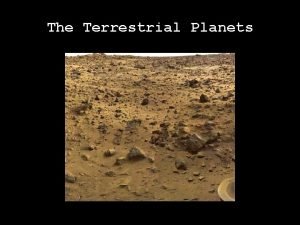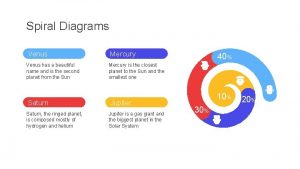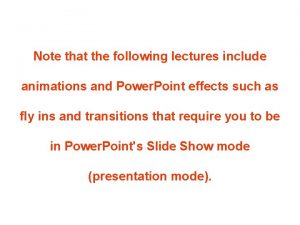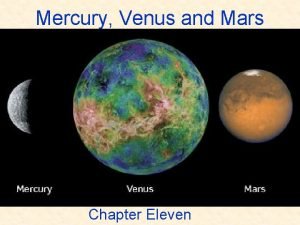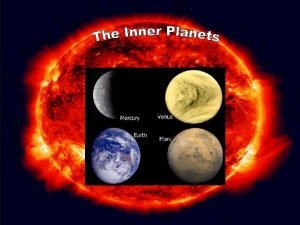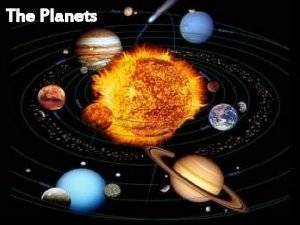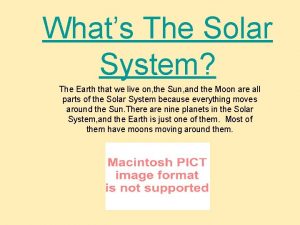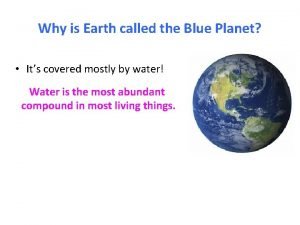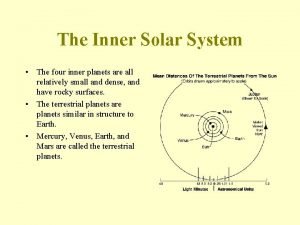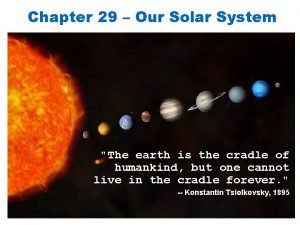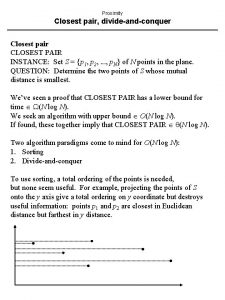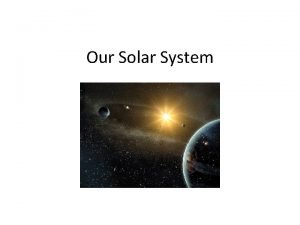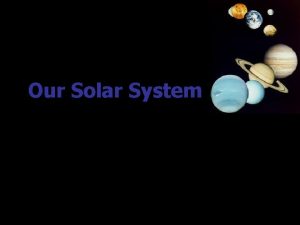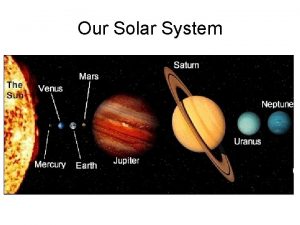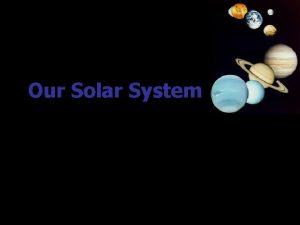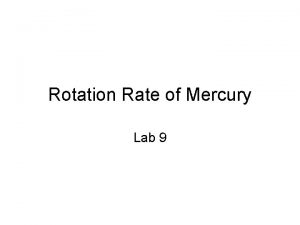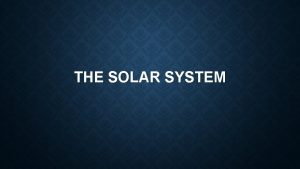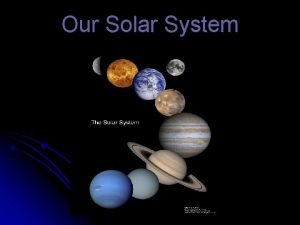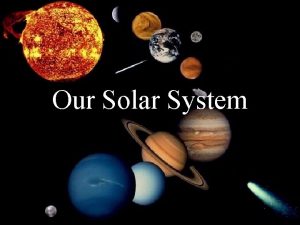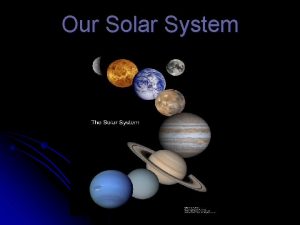Our Solar System Mercury the Fastest Planet closest













- Slides: 13

Our Solar System

Mercury, the Fastest Planet • closest planet from Sun • Small, rocky planet • Fastest planet – 50 km/sec (88 days = 1 year) • Temperatures 467* C to -183* C • Very little atmosphere

Venus, Earth’s Twin • • Earth’s twin (~same size, mass, composition, and distance from sun) Thick atmosphere that traps heat Hottest planet (450*C) (hot enough to melt lead) Intense pressure Winds faster that hurricane force winds Day longer than year Rotates backwards (sun rises in west, sets in east)

Earth, the Planet with Life • Has life • 3 rd planet from Sun • 5 th largest planet • Tilted axis gives us seasons

Mars, the Red Planet • Red planet • Small and rocky • Has volcanoes, impacts, tectonics, dust storms, polar ice caps • Great dust storms engulf entire planet creating giant dunes, wind streaks, wind carved features • Highest mountains and deepest canyons

Jupiter, the Largest Planet • Biggest planet • Like a mini solar system with 63 moons and rings • Composition resembles a small star • Jupiter’s moon Io is the most volcanically active body in the solar system • Large red spot (a hurricane)

Saturn, the Ringed Planet • A gas giant with rings • Mostly made of hydrogen and helium • Volume 755 times that of Earth’s • Winds reach 500 m/s (Earth’s strongest hurricane winds are 110 m/s) • Fast winds and heat from interior cause yellow and gold bands in atmosphere

Uranus, the Sideways Planet • Has some of the brightest clouds • 11 rings • Blue-green color from methane gas • 7 th planet, it takes 84 years to orbit Sun • No solid surface – a gas giant • Liquid core

Neptune, the Windy Planet • 8 th planet – orbits Sun in 165 years • Farthest planet from Sun for 20 year period out of every 248 Earth years. • Large dark spot (a storm) • Has rings like all the gas giants

Pluto, the Icy Dwarf Planet • Small, cold dwarf planet (It is not a planet anymore. Scientist changed the classification of planets. Pluto did not change. ) • Takes 248 years to orbit Sun • 2/3’s the diameter of Earth’s Moon • Rocky core surrounded by water ice • Pluto and its moon Charon share the same orbit

Asteroids • Rocky fragments • Asteroid belt between Mars and Jupiter • Millions from ¼ size of the moon to less than a kilometer across • Mars’s moons may be captured asteroids

Meteroids • Bits of material hurling through space • Meteors or “shooting stars” are these materials as they fall through Earth’s atmosphere. Air friction causes them to heat up and shine like stars. • Meteorites are when these bits of materials reach the earth’s surface.

Comets • Dirty ice leftovers • The tails always point away from the Sun. The solar wind blows the particles that make up the tail away.
 Characteristics of outer planets
Characteristics of outer planets Biggest planet in our solar system
Biggest planet in our solar system Special features of saturn
Special features of saturn Solar system characteristics
Solar system characteristics What colour is venus
What colour is venus Mercury (planet)
Mercury (planet) Mercury planet
Mercury planet Mercury planet
Mercury planet Only planet not named after a god
Only planet not named after a god Law of planetary motion
Law of planetary motion Whats the biggest planet in the solar system
Whats the biggest planet in the solar system Paragraph about earth
Paragraph about earth The four inner planets
The four inner planets Chapter 29 our solar system
Chapter 29 our solar system


